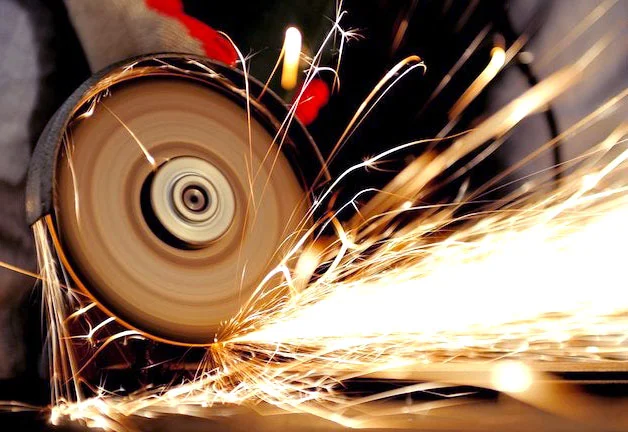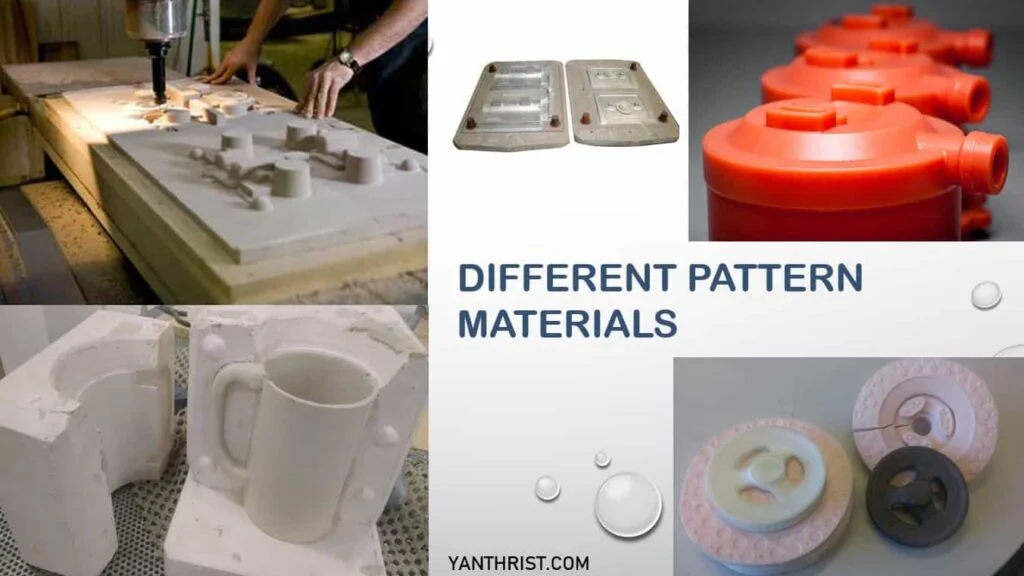Introduction
Grinding is a finishing process which is used to provide desired surface finish to machined products. It is done by feeding the work piece against a rotating wheel which contains a lot of abrasive particles. Such a wheel is called Grinding Wheel and the process is known as Grinding.
Under the action of abrasive particles, the surface of work piece wears out and hence desired machining effect is obtained. Usually, the Material Removal Rate (MRR) is low and hence there is a good control over the dimensional accuracy of the work pieced and its surface finish. This makes Grinding a very preferred finishing process for the industries.
But, industrially there can be many different types of abrasive particles that can be used and the strength and rigidity of the particles may also vary depending upon the application. Based on various such properties and parameters, the grinding wheels are designated differently to facilitate easy identification. We shall discuss these properties and designations in detail in this article.

Properties of Grinding Wheels
I. Abrasive particles used
The abrasive particle being used in a Grinding Wheel critically determines the type of grinding we will have. Abrasives like Aluminum Oxide (Al2O3) is best suited for grinding ferrous materials while the harder abrasives like Silicon Carbide (SiC) is best suited for Brass and Aluminum. Another very commonly used abrasive is Cubic Boron Nitride (CBN). It is even harder and can machine harder materials like tool steel.
Aluminum Oxide (Al2O3) is designated as…… ‘A’
Silicon Carbide (SiC) is designated as…………. ‘C’
II. Grain Size
Grain size refers to the size of abrasive grains present on the surface of the grinding wheel. Grain sizes can vary from Coarse (very large) to Very Fine (very small). Coarse grains are best suited for softer work pieces while fine grains are suited for harder work pieces. Also, material removal rate increases as larger and coarser grains are used.
For designation, remember that the smaller the grain size, the larger is the grain size number associated to it. Refer to the following standard designation for various grain sizes.
Coarse Grain Size……….. 0 to 25
Medium Grain Size ……. 26 to 65
Fine Grain Size …………….. 66 to 180
Very Fine Grain Size …….. above 180
III. Grade
Abrasive grains are held together by an adhesive like material which is referred to as ‘Bond’. The hardness of this bond is called ‘Grade’. For machining softer work piece, harder grades are preferred and for machining harder work piece softer grades are preferred. Grade of grinding wheel ranges from A to Z, the earlier ones being softer and the later ones being harder. The Grade designations are detailed below.
Soft Grade : A to H
Medium Grade: I to P
Hard Grade: Q to Z
IV. Structure
Structure of grinding wheel refers to the spacing between the abrasive particles. It is very obvious that coarse grain structure wheel will have more spacing between the abrasives. Such a grain structure is called ‘Open Spaced structure’ while Fine grain sized abrasives will have ‘Dense Structure‘ in which, the spacing between the grains is very less. As evident, Open Spaced Structure wheel is used for machining soft work piece and vice-versa.
Given below is the designation of grinding wheels as per its structure:
Dense Spaced Structure: 0 to 5
Medium Spaced Structure: 6 to 10
Open Spaced Structure: 11 to 18
V. Type of Bond
Various types of bond materials are used in grinding wheels as discussed earlier. And they have various designations, some of which are listed below:
Vitrified: V
Resinoid: B
Rubber: R
Silicate: S
Magnesia: Mg
Shellac: E
Designation of Grinding Wheel
These four properties or parameters together are used to designate a grinding wheel. They are written horizontally one after the other in the same sequence.
Apart from these parameters, there are two more symbols that are often used to completely designate a grinding wheel. They are Manufacturer’s Symbol and Manufacturer’s Reference. Both of these are optional and are random numbers written at the left most and the right most end of the designation. They are used mainly for identification by the manufacturer and are of no special significance.
A sample Grinding Wheel Designation is shown below: Notice the superscripts of each element and their reference code below for details.
51 * A I 38 II F III 4 IV R V 23 **
Each element of the designation stands for the following :
* marked element // Manufacturer’s Symbol.
I marked element // Type of Abrasive. (A=Aluminium Oxide in this example)
II marked element // grain size. (38= Medium Size Grain)
III marked element // Grade. ( F= Soft Grade)
IV marked element // Structure. (4= Dense Structure)
V marked element // Bond type. (R= Rubber Bond)
** marked element // Manufacturer’s Reference.
So, this example Grinding Wheel is a Soft grade, dense structured, wheel having medium sized abrasive grains of Aluminum oxide with a Rubber bond.


